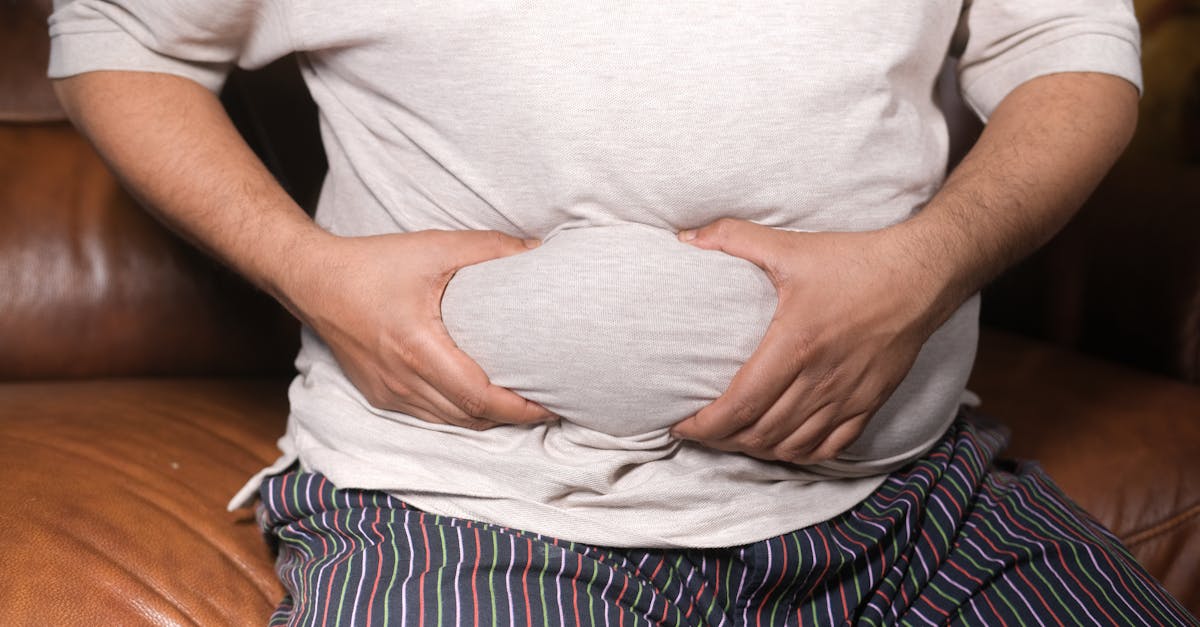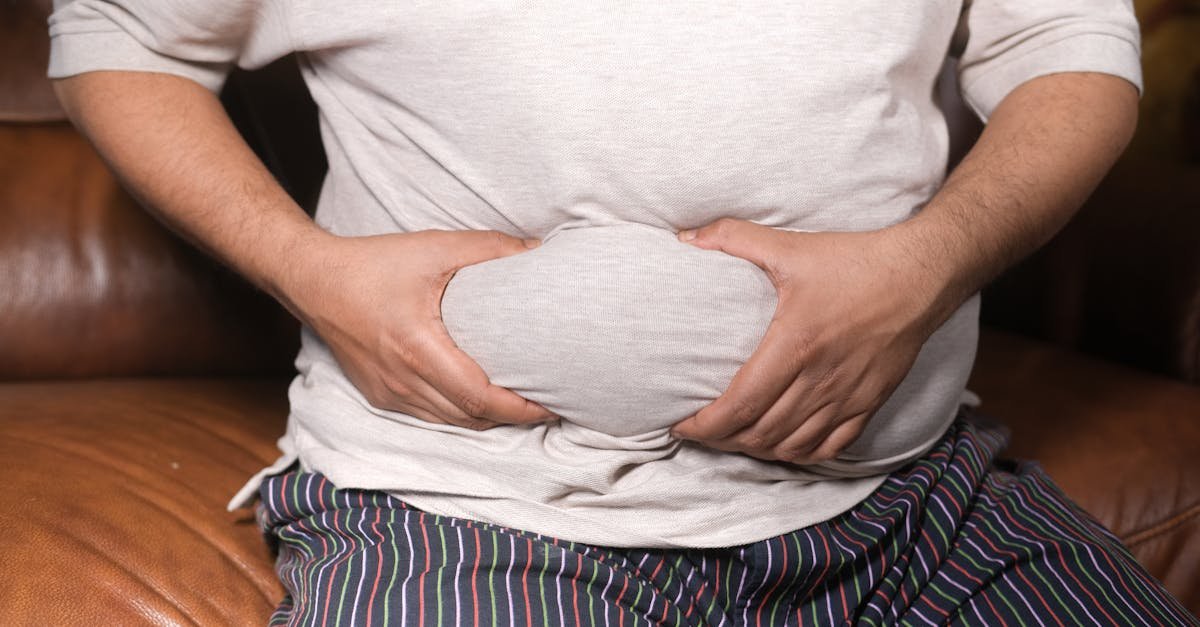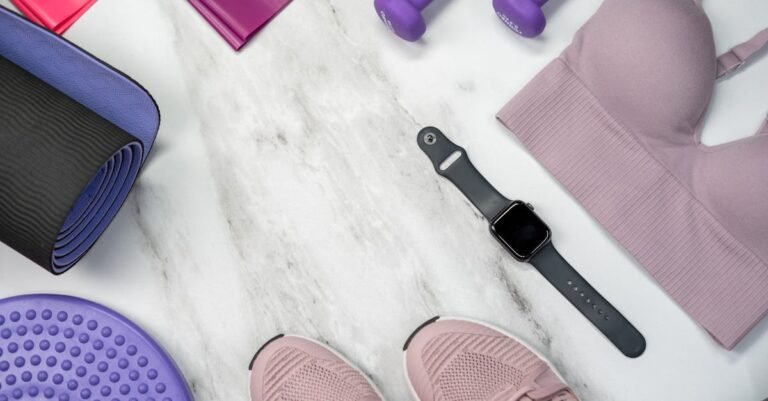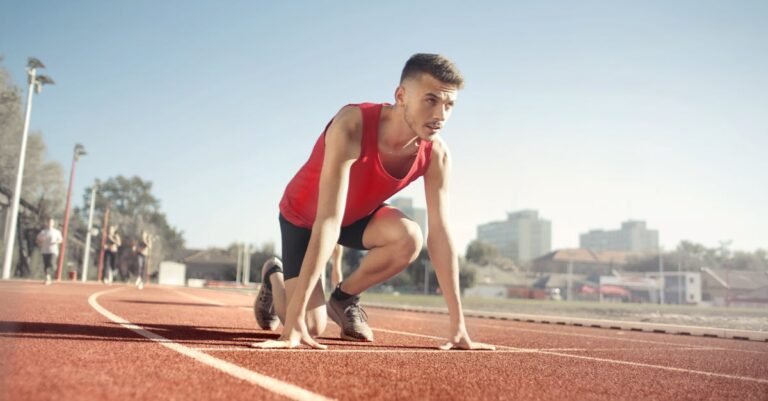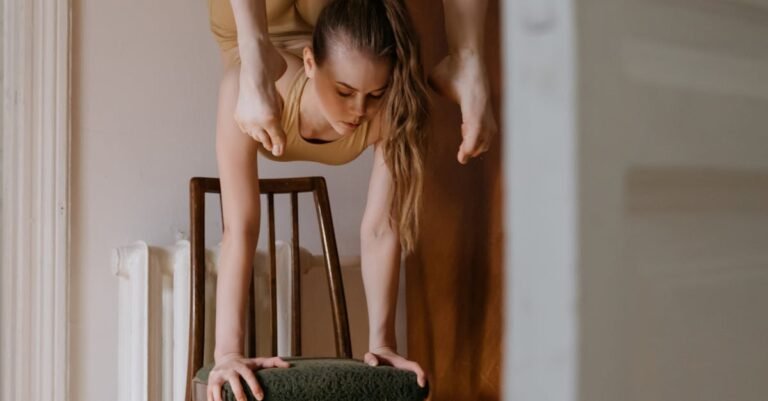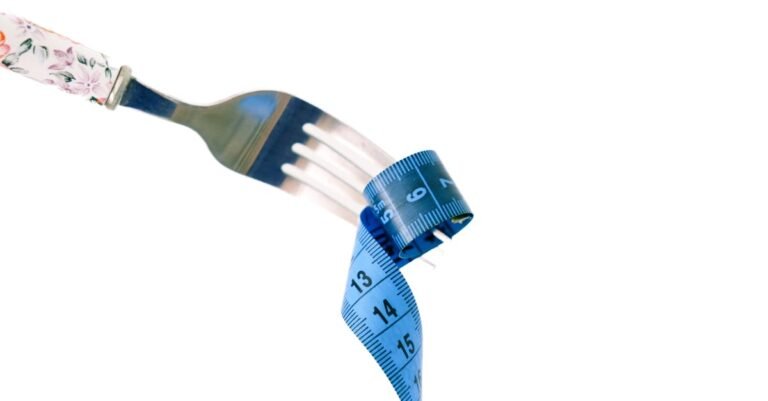Table of Contents
- How To Measure Body Fat Percentage At Home: Your Ultimate Guide
- Why Bother Measuring Body Fat Percentage Anyway?
- Getting Started: What You Need to Know Before You Measure
- Popular Home Methods for Measuring Body Fat
- Accuracy Showdown: Which Home Method is Best?
- Tracking Your Progress Effectively
- Healthy Body Fat Percentage Ranges: What Should You Aim For?
- Conclusion: Finding Your Best Fit for Measuring Body Fat
- Frequently Asked Questions (FAQs)
How To Measure Body Fat Percentage At Home: Your Ultimate Guide
So, you’re curious about your body composition, huh? You’ve probably stepped on the scale a million times, but that number only tells part of the story. What about the squishy bits versus the lean muscle? Knowing your body fat percentage gives you a much clearer picture of your health and fitness progress than just your weight alone. But heading to a lab for a DEXA scan isn’t always practical or affordable. Good news! You can get a pretty decent estimate right in the comfort of your own home. Ready to dive into the world of home body fat measurement? Let’s break it down.
Why Bother Measuring Body Fat Percentage Anyway?
You might be thinking, “Isn’t my weight enough?” Well, not quite. Imagine two people who weigh the exact same. One might be mostly muscle, looking lean and toned, while the other might carry more fat mass. The scale wouldn’t differentiate between them, but their health profiles could be vastly different. That’s where body fat percentage comes in.
Beyond the Bathroom Scale: What Body Fat Tells You
Your body fat percentage is simply the proportion of your total body weight that is composed of fat tissue. The rest is lean body mass – muscles, bones, organs, water, etc. Knowing this percentage helps you understand your body composition. Are you losing fat and gaining muscle, even if the scale isn’t budging much? Tracking your body fat percentage can reveal these crucial changes. It’s like looking under the hood of your car instead of just admiring the paint job; it tells you what’s really going on internally.
Health Implications: Why It Matters More Than Just Weight
Carrying excess body fat, particularly visceral fat (the stuff around your organs), is linked to a higher risk of various health problems. We’re talking heart disease, type 2 diabetes, high blood pressure, and even certain types of cancer. Conversely, having *too little* body fat can also be problematic, potentially disrupting hormone function and other essential processes. Monitoring your body fat percentage helps you stay within a healthy range, giving you valuable insight into your overall health risks beyond just a simple weight measurement.
Getting Started: What You Need to Know Before You Measure
Before you grab a tape measure or step on that fancy scale, there are a few things to keep in mind to ensure you’re getting the most reliable readings possible from home methods.
Understanding Essential vs. Storage Fat
Not all body fat is created equal! We need a certain amount of essential fat for basic physiological functions – think hormone regulation, nerve function, and cushioning organs. This is the bare minimum fat your body needs to survive. For men, this is typically around 2-5%, and for women, it’s higher, around 10-13%, due to childbearing and hormonal functions. Anything above this essential level is considered storage fat. While some storage fat is normal and provides energy reserves, excessive amounts contribute to health risks. When we measure body fat percentage, we’re looking at the total (essential + storage) fat relative to total body mass.
Factors Affecting Accuracy (Hydration, Food, Exercise)
Home body fat measurement methods aren’t perfect, and several factors can throw off the results. Hydration levels are a big one, especially for BIA scales (more on those later). Being dehydrated can make your body fat percentage appear higher, while being overly hydrated might make it seem lower. What you’ve recently eaten or drunk can also influence readings. Similarly, exercising right before measuring can skew results, as it changes fluid distribution and body temperature. For the most consistent results, try to measure under the same conditions each time – ideally, first thing in the morning, after using the restroom, before eating, drinking, or exercising.
Popular Home Methods for Measuring Body Fat
Okay, let’s get to the nitty gritty. What tools and techniques can you actually use at home? Here are some of the most common options:
Method 1: Body Fat Calipers (Skinfold Measurement)
This is one of the oldest and most accessible methods. It involves using a simple, pincer like tool called a caliper to measure the thickness of skinfolds at specific points on your body.
How Calipers Work: The Pinch Test Explained
The basic idea behind skinfold calipers is that a certain proportion of your total body fat lies just beneath the skin (subcutaneous fat). By measuring the thickness of folds of skin and the underlying fat layer at several locations, you can use specific formulas (like the Jackson Pollock or Durnin Womersley methods) to estimate your overall body fat percentage. It’s essentially a calculated guess based on these pinched measurements.
Step by Step Guide: Using Calipers Correctly
Accuracy with calipers heavily depends on technique. Here’s a general idea (though specific protocols vary):
- Choose Your Sites: Common sites include the triceps (back of the upper arm), biceps, subscapular (below the shoulder blade), suprailiac (just above the hip bone), abdomen, and thigh. Men and women often use slightly different combinations of sites (e.g., 3 site, 7 site formulas).
- Pinch Properly: Using your thumb and forefinger, firmly pinch a fold of skin and the subcutaneous fat away from the underlying muscle. The pinch should be large enough to get a good fold but not painful.
- Apply the Caliper: Place the jaws of the caliper perpendicular to the fold, about 1 cm away from your fingers. Release the caliper trigger so the jaws exert their calibrated pressure on the skinfold.
- Read the Measurement: Note the reading on the caliper dial (usually in millimeters) after a second or two. Don’t hold it too long, as the jaws might compress the fluid out of the tissue.
- Repeat: Take 2 or 3 measurements at each site, waiting a few seconds between pinches to allow the skin to return to normal. Average the consistent readings for each site.
- Calculate: Plug the measurements (in mm) and your age into the appropriate formula (many online calculators exist for specific formulas) to get your estimated body fat percentage.
Consistency is key! Always use the same sites and try to pinch with the same pressure each time. Having someone else take the measurements can often improve accuracy, especially for hard to reach spots like the back.
Pros and Cons of Calipers
Pros: Calipers are relatively inexpensive, portable, and, when used correctly by a skilled person, can provide reasonably accurate and consistent results for tracking changes over time. They directly measure subcutaneous fat.
Cons: Technique matters A LOT. It takes practice to get consistent pinches. Accuracy can vary depending on who is doing the measuring, the quality of the calipers, and the formula used. It can be difficult to measure yourself accurately, especially at certain sites. Calipers are also less accurate for individuals who are very lean or significantly overweight, as pinching the skinfold correctly becomes harder.
Method 2: Bioelectrical Impedance Analysis (BIA) Scales & Handheld Devices
These are probably the most popular home devices – the scales look just like regular bathroom scales but with metal footpads, and handheld devices have metal grips.
The Science Behind BIA: How Electricity Measures Fat
BIA works by sending a very low level, safe electrical current through your body. Fat tissue conducts electricity poorly (it has high impedance or resistance), while lean tissue (muscle, water) conducts electricity well (low impedance). The device measures the speed and strength of the current as it travels through your body. By factoring in your height, weight, age, and sex (which you usually input into the device), the scale or handheld unit uses built in equations to estimate your body fat percentage based on the measured impedance.
Tips for Getting More Accurate BIA Readings
As mentioned earlier, BIA is very sensitive to hydration levels. To improve consistency:
- Measure at the same time each day, under the same conditions (e.g., morning, post restroom, pre food/drink/exercise).
- Ensure your feet (for scales) or hands (for handhelds) are clean and bare.
- Stand still on the scale with feet properly positioned on the sensors.
- Avoid measuring right after intense exercise, showering/bathing, or drinking large amounts of fluid (including alcohol or caffeine).
- Be aware that the menstrual cycle can affect hydration and thus BIA readings in women.
Focus on the *trend* over time rather than fixating on a single day’s reading, as fluctuations are common.
Pros and Cons of BIA Devices
Pros: BIA devices are incredibly convenient and easy to use – just step on the scale or grab the handles. They provide quick readings and often track other metrics like weight, muscle mass, and body water.
Cons: Accuracy can be highly variable and is easily influenced by hydration status, recent meals, exercise, and even skin temperature. Home grade BIA devices are generally considered less accurate than clinical methods or even well performed caliper tests. The formulas used can vary between manufacturers, leading to different readings from different devices. Scales primarily measure impedance in the lower body, while handhelds focus on the upper body, potentially missing the full picture.
Method 3: The U.S. Navy Method (Tape Measure Method)
This method, developed by the U.S. Navy for assessing the body composition of its personnel, uses simple body circumference measurements with a standard tape measure.
Measuring Up: How to Perform the Navy Method
You’ll need a flexible, non stretch tape measure. The required measurements differ for men and women:
- For Men: Measure the circumference of the neck (below the larynx, keeping the tape level) and the abdomen (at the level of the navel, keeping the tape level and parallel to the floor). Also record your height.
- For Women: Measure the circumference of the neck (as above), the natural waist (at the narrowest point between the ribs and hips), and the hips (at the widest point over the buttocks). Also record your height.
Take each measurement 2 3 times and average them. Ensure the tape is snug but not compressing the skin. Relax and measure during normal exhalation.
Calculating Your Percentage: The Formulas
Once you have the measurements (usually in inches, though metric versions exist) and your height, you plug them into specific formulas. These formulas are readily available online – just search for “US Navy body fat calculator.” They use logarithmic equations based on the circumference measurements and height to estimate body fat percentage.
Example (Conceptual):
Men %Fat = Formula based on (AbdomenCircumference – NeckCircumference) and Height
Women %Fat = Formula based on (WaistCircumference + HipCircumference – NeckCircumference) and Height
Don’t worry about memorizing the complex formulas; online calculators do the heavy lifting!
Pros and Cons of the Tape Measure Method
Pros: This method requires only a simple tape measure, making it very inexpensive and accessible. It’s quick and easy to perform yourself. Since it relies on circumferences, it can be reasonably consistent for tracking changes if measurements are taken carefully.
Cons: Its accuracy can be questionable, as it doesn’t directly measure fat. It assumes fat distribution patterns that might not hold true for everyone (e.g., someone with large hips but low body fat, or someone with thin limbs but more abdominal fat). Like calipers, measurement technique (tape tension, location) matters for consistency. It’s generally considered less accurate than calipers or BIA for an absolute number but can be useful for monitoring trends.
Method 4: Visual Estimation & Progress Photos (A Less Precise Approach)
While not a quantitative measurement method, visually assessing your physique and taking regular progress photos can be a valuable tool.
You can find numerous visual guides online showing different body fat percentages for men and women. By comparing your current physique to these images, you can get a rough ballpark estimate. Taking photos from the front, side, and back under consistent lighting conditions every few weeks or months allows you to visually track changes in definition, muscle tone, and fat distribution that might not be perfectly captured by other methods. It’s motivating and provides real world evidence of your progress (or lack thereof).
Pros: Free, easy, requires no equipment (except a camera/phone), and focuses on tangible visual changes.
Cons: Highly subjective and imprecise for getting an actual percentage. Estimates can be easily biased. Not useful for small, incremental changes.
Accuracy Showdown: Which Home Method is Best?
So, which of these home methods gives you the “true” number? Well, spoiler alert: none of them are perfectly accurate compared to gold standard clinical methods like DEXA scans or hydrostatic weighing.
Understanding Margin of Error
Every home method has a margin of error. Calipers, when used expertly, might have an error rate of around ±3.5% to ±5%. BIA devices can vary even more widely, sometimes ±5% or even higher, depending heavily on the factors we discussed (like hydration). The Navy method also has a significant margin of error, often cited around ±3% to ±5% or more. Visual estimation is, well, a guess.
This means if a BIA scale tells you you’re at 20% body fat, your actual percentage could reasonably be anywhere from 15% to 25% (or even a wider range). That sounds like a big difference, right?
Consistency Over Absolute Accuracy
Here’s the key takeaway for home measurement: focus on consistency, not absolute accuracy. While the exact number might be off, if you use the same method under the same conditions consistently over time, you can track the *trend* effectively. Did your caliper measurements decrease? Did your BIA reading trend downwards over several weeks (despite daily fluctuations)? Did your Navy measurements change? Are your progress photos showing more definition? These trends are far more valuable for monitoring your progress than getting hung up on whether your BIA scale’s 18.2% is “correct.” Pick one method you can perform consistently and stick with it.
Tracking Your Progress Effectively
Okay, you’ve chosen your method(s). How do you actually use this data?
Don’t measure obsessively every day! Body fat percentage doesn’t change dramatically overnight. Fluctuations, especially with BIA, are normal.
- Measure Periodically: Aim for measurements every 2 to 4 weeks. This gives your body time to make real changes.
- Record Everything: Keep a log of your measurements, the date, and the conditions (e.g., “morning, pre breakfast”).
- Look for Trends: Plot your results on a graph or simply look at the numbers over several months. Are they generally increasing, decreasing, or staying stable?
- Combine Methods (Optional but Recommended): Use a quantitative method (like calipers or BIA) alongside a qualitative one (like progress photos or how your clothes fit). This gives a more holistic view. Maybe your BIA reading is stubborn, but your photos clearly show you’re leaning out – that’s still progress!
- Don’t Forget Other Metrics: Track your weight, body measurements (waist, hips, arms, etc.), how you feel, your energy levels, and your performance in workouts. Body fat is just one piece of the puzzle.
Healthy Body Fat Percentage Ranges: What Should You Aim For?
What’s considered “healthy” varies based on age, sex, and fitness level. Here are some general guidelines, often provided by organizations like the American Council on Exercise (ACE):
- Essential Fat: Men 2-5%, Women 10-13% (Below this is unhealthy)
- Athletes: Men 6-13%, Women 14-20%
- Fitness: Men 14-17%, Women 21-24%
- Acceptable/Average: Men 18-24%, Women 25-31%
- Obesity: Men 25%+, Women 32%+
Remember, these are just general ranges. Your ideal percentage depends on your individual goals and health status. Aiming for the super low “athlete” ranges isn’t necessary or even desirable for most people seeking general health and fitness. Focus on being within the healthy “fitness” or “acceptable” ranges and, more importantly, on making sustainable lifestyle choices.
Conclusion: Finding Your Best Fit for Measuring Body Fat
Measuring your body fat percentage at home is definitely doable and can provide valuable insights beyond the bathroom scale. Whether you choose calipers, a BIA scale, a tape measure, or simply progress photos, the most crucial factor is consistency. Understand that home methods have limitations and margins of error. Don’t obsess over the exact number; instead, use the tool to track your progress and trends over time. Combine your body fat measurements with other indicators like weight, measurements, photos, and how you feel to get a complete picture of your health and fitness journey. Pick the method that you find easiest to stick with consistently, and use that data to inform your choices and celebrate your successes!
Frequently Asked Questions (FAQs)
FAQ 1: How often should I measure my body fat percentage?
Measuring too frequently (like daily) can be misleading due to normal fluctuations, especially with BIA scales affected by hydration. Aim to measure every 2 to 4 weeks, under the same conditions each time, to track meaningful trends rather than daily noise.
FAQ 2: Can BMI tell me my body fat percentage?
No, Body Mass Index (BMI) does not measure body fat percentage. BMI is a calculation based only on your height and weight (kg/m²). It’s a screening tool for potential weight categories but doesn’t distinguish between muscle mass and fat mass. A very muscular person could have a high BMI but low body fat, while someone with low muscle mass could have a “normal” BMI but a high body fat percentage.
FAQ 3: Are smart scales accurate for body fat?
Smart scales typically use Bioelectrical Impedance Analysis (BIA). As discussed, the accuracy of home BIA devices can be quite variable and is highly sensitive to factors like hydration, recent food intake, and exercise. They are generally considered less accurate than clinical methods or even well executed skinfold caliper measurements for determining an absolute percentage. However, they can be useful for tracking *trends* over time if used consistently under the same conditions.
FAQ 4: What’s the most accurate way *overall* to measure body fat (even if not at home)?
The “gold standard” methods, usually found in clinical or research settings, include Dual Energy X ray Absorptiometry (DEXA) scans, Hydrostatic Weighing (underwater weighing), and Air Displacement Plethysmography (like the Bod Pod). These methods are more accurate but also more expensive and less accessible than home methods.
FAQ 5: Can I lower my body fat percentage too much?
Yes, absolutely. Dropping below essential fat levels (around 2-5% for men, 10-13% for women) is dangerous and can lead to serious health issues. These include hormonal imbalances (like loss of menstruation in women), nutrient deficiencies, decreased immune function, organ damage, and fatigue. Striving for extremely low body fat percentages is generally unnecessary for health and can be detrimental.
